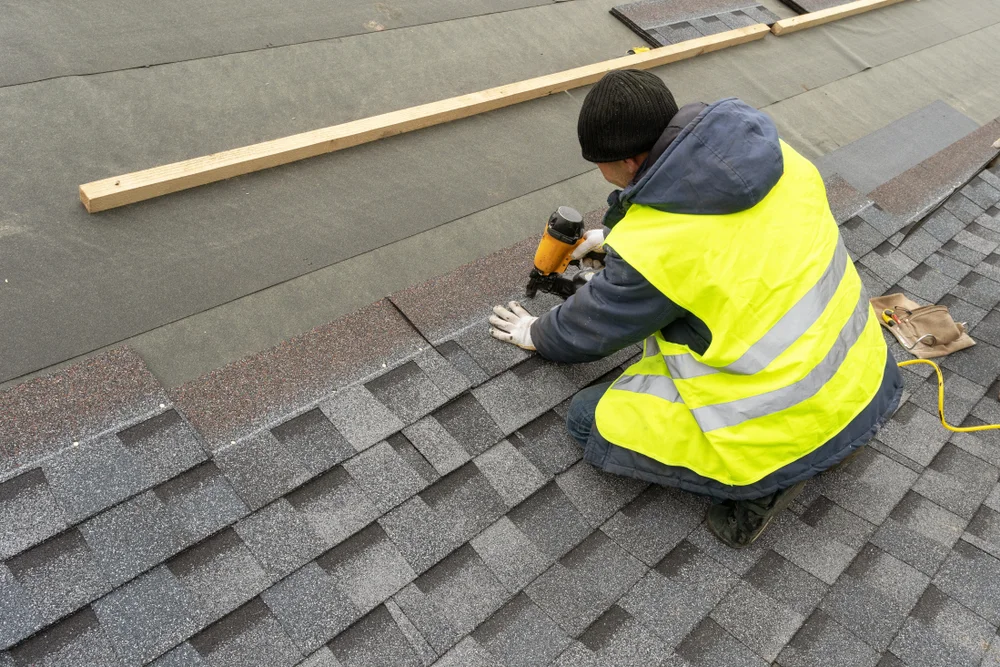The primary job of any roof is to protect building occupants from risks of any kind, and these include major disaster risks like fire, floods and related areas. With regard to these kinds of disasters and major threats, one of the most important components on your roof is shingles, which are primarily made from asphalt.
At The Roof Doctor, we’re here to assist Salt Lake City and other Utah clients with a wide range of roof needs, including roof replacement, roof repairs and more. When installing any kind of new roof, we’ll be sure to inform you of basic qualities like fire resistance and others in this realm, as we know how important protection from these kinds of risks is to you and your family. Here are some basics on the ranges of protection you’ll typically see in these areas when utilizing asphalt shingles, plus what to be thinking about with regard to these kinds of threats.
Fire Ratings
Especially in a place like Utah, where extremely dry conditions in the summer can sometimes lead to fire risks, it’s vital to know that your roof can put up a good fight in the event of a fire. All asphalt shingles will come with some kind of fire rating, which is generally either Class A, B or C. Here’s a look at what these different ratings actually mean:
Class A: This is the highest possible rating and means that the shingles give the roof deck a “high” degree of fire resistance. In order to receive this rating, the shingles must be tested in accordance with ASTM E108 or UL 790 and found to have a self-ignition temperature of more than 650 degrees Fahrenheit (F).
Class B: This is the second highest rating and means that the shingles give the roof deck a “moderate” degree of fire resistance. In order to receive this rating, the shingles must be tested in accordance with ASTM E108 or UL 790 and found to have a self-ignition temperature of more than 575 degrees Fahrenheit (F).
Class C: This is the lowest possible rating and means that the shingles give the roof a “slight” degree of fire resistance. In order to receive this rating, the shingles must be tested in accordance with ASTM E108 or UL 790 and found to have a self-ignition temperature of more than 450 degrees Fahrenheit (F).
As you can see, there’s quite a range in protection levels here, so it’s important that you be aware of them and know which is best for your needs. Typically, Class A is the best option if it’s available to you, as this gives the highest level of protection.
Now, fire resistance is not the only important theme in this overall realm. Our next few sections will look at some other vital factors to ask about when installing new roofs or shingles.
Wind Resistance
Another important factor to consider is wind resistance, as this can be vital in protecting your roof (and therefore your home or business) from damage in high winds. All asphalt shingles will come with a wind rating that’s generally anywhere from 70 to 150 MPH of protection.
This is generally plenty for most needs, but if you live in an area that’s particularly prone to high winds (such as near the coast), you may want to consider shingles that offer even higher protection in this realm. For instance, shingles installed with an Owens Corning or similar high-level sealant may be able to resist higher wind speeds.
Algae Resistance
Another factor to consider is algae resistance. This is particularly important in areas with high humidity levels or that are prone to moss and other growths. All shingles will come with an algae resistance rating, which is generally either Class I, II or III. Here’s a look at what these different ratings actually mean:
Class I: This is the highest possible rating and means that the shingles are highly resistant to algae growth.
Class II: This is the second highest rating and means that the shingles are moderately resistant to algae growth.
Class III: This is the lowest possible rating and means that the shingles are slightly resistant to algae growth.
As you can see, there’s quite a range in protection levels here, so it’s important that you be aware of them and know which is best for your needs. Typically, Class I is the best option if it’s available to you, as this gives the highest level of protection.
Also important here is the type of sealing used on the shingles. Some types of sealants are more resistant to algae growth than others, so this is something to ask about when you’re shopping for shingles.
Watertightness
Another form of protection that’s absolutely vital for any roof is watertightness. This is what keeps your home or business dry during rainstorms, snowstorms and other inclement weather. All shingles will come with a watertightness rating that’s generally anywhere from 1 to 10.
The higher the number, the more waterproof the shingles are. So, for instance, shingles with a rating of 10 are the most waterproof on the market, while those with a rating of 1 are the least waterproof.
As you can see, there’s quite a range in protection levels here, so it’s important that you be aware of them and know which is best for your needs. Typically, the higher the number, the better, as this gives the highest level of protection.
There are a few different things that go into a shingle’s watertightness rating. One is the type of asphalt used, as some types are more waterproof than others. Another is the type of sealant used, as some types are more waterproof than others.
For more on how asphalt shingles protect your roof from various disaster threats, or to learn about any of our roofing services in SLC or nearby areas, speak to the pros at The Roof Doctor today.

